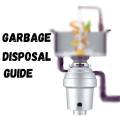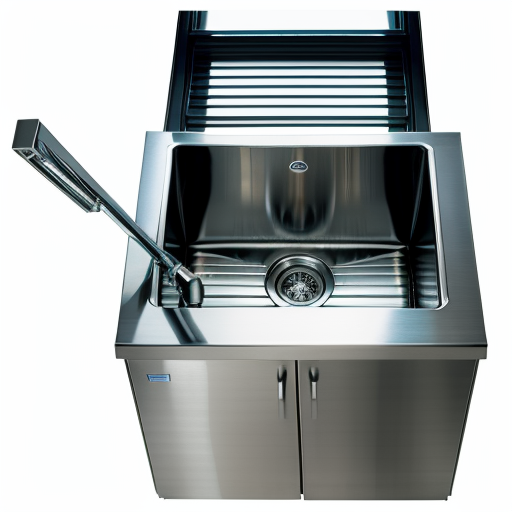The convenience of a garbage disposal unit (GDU) is undeniable. These handy appliances grind food scraps into tiny particles, whisking them away down the drain with a simple switch. While seemingly a universal kitchen perk, in Canada, the legality of garbage disposals takes a surprising twist.
Before diving into the world of grinding food waste, it’s crucial to understand the legal considerations across Canadian provinces. Unlike the United States, where garbage disposals are widely accepted, some Canadian provinces have restrictions on their installation. Let’s explore how these legal variations can impact your decision to install a garbage disposal in your Canadian kitchen.
The Great Canadian Grind Divide: Legality and Alternatives
Now that we’ve explored the convenience of garbage disposal units (GDUs), let’s delve into the legal landscape across Canada. Unlike a smooth national policy, GDUs face a patchwork of regulations.
Provinces with Restrictions:
- Ontario, Quebec, and some municipalities in other provinces: These regions have restrictions or even bans on GDU installation. The primary reason? Concerns about the impact of food scraps on wastewater treatment systems. These systems may not be equipped to handle the increased load of organic material, potentially leading to clogs and environmental issues.
Provinces with No Restrictions:
- Alberta, British Columbia, and some other provinces: These regions allow GDU installation without restrictions. However, it’s still wise to check with your local municipality to confirm any specific regulations in your area.
Before You Grind: Always check with your local municipality or waste management company to confirm the legality of installing a GDU in your area. Skipping this step could lead to fines or even require removal of the unit.
Going Green Without the Grind:
Even if GDUs are a no-go in your region, there are plenty of eco-friendly alternatives for managing food waste:
- Composting: This classic waste reduction method offers both indoor and outdoor options. Kitchen scraps decompose into nutrient-rich soil amendment, perfect for your garden or houseplants.
- Worm Composting: Taking composting a step further, worm composting utilizes worms to break down food waste efficiently and create a valuable fertilizer called vermicompost.
- Green Bin Programs: Many municipalities offer green bin programs for organic waste collection. Scrape your plates directly into the green bin, and let the waste management company handle the composting process.
By exploring these alternatives, you can contribute to a sustainable waste management system, even without a garbage disposal unit.
Diverting the Grind: Eco-Friendly Alternatives and GDU Installation
With the legal landscape of garbage disposal units (GDUs) in Canada mapped out, let’s explore some eco-friendly alternatives and, for those in GDU-approved regions, the installation process.
Going Green Without the Grind:
Even if your province restricts GDUs, you have several sustainable options for managing food scraps:
- Composting: This champion of waste reduction offers both indoor and outdoor options:
- Indoor Composting: Countertop compost bins or under-sink composters provide convenient solutions for smaller kitchens.
- Outdoor Composting: Backyard compost bins or tumblers turn food scraps into nutrient-rich compost for your garden.
- Worm Composting: Take composting to the next level with worm composting! These efficient little decomposers break down food waste quickly and create a valuable fertilizer called vermicompost.
- Green Bin Programs: Many municipalities offer green bin programs specifically for organic waste collection. Simply scrape your plates directly into the green bin, and the waste management company handles the composting process for you.
Installing a GDU (if Legal in Your Area):
For those in GDU-approved regions, here’s what to consider before installation:
- Legality Check: Double-check with your local municipality or waste management company to confirm GDUs are indeed allowed in your area. Avoid any potential headaches by ensuring compliance with local regulations.
- Plumbing Compatibility: Not all sinks are created equal. Ensure your sink has a garbage disposal flange, a necessary component for proper installation and leak prevention. Consult a plumber if unsure about compatibility.
Tools You’ll Need:
Once you’ve confirmed legality and compatibility, gather your tools for a smooth installation:
- Adjustable wrench
- Screwdriver (flathead or Phillips depending on your GDU model)
- Plumber’s putty (optional, for extra leak protection)
- Bucket or rag (to catch drips or debris)
For the step-by-step installation guide, we can refer back to the detailed explanation you provided earlier to ensure a comprehensive and informative article. This will include details like attaching the flange ring, installing the gasket, securing the disposal unit, and (if applicable) installing the overflow plate.
Gearing Up to Grind: Considerations and Installation for Garbage Disposal Units (GDUs)
While some Canadian provinces have restrictions on garbage disposal units (GDUs), for those in GDU-approved regions, these handy appliances can offer a convenient way to manage food scraps. Before diving into the installation process, let’s ensure you’re ready to grind with confidence.
Pre-Installation Considerations:
- Legality Check: This is paramount! Always confirm with your local municipality or waste management company that GDUs are legal in your area. Operating a GDU where prohibited could result in fines or require removal.
- Plumbing Compatibility: Not all sinks are GDU-ready. Your sink needs a garbage disposal flange, a ring-shaped component mounted under the sink that provides a secure foundation for the GDU and prevents leaks. If you’re unsure about compatibility, consult a plumber for guidance.
Gathering Your Arsenal:
Once you’ve confirmed legality and compatibility, assemble the tools you’ll need for a smooth installation:
- Adjustable wrench: For tightening the mounting bolts that secure the GDU to the flange.
- Screwdriver (flathead or Phillips depending on your GDU model): May be required for certain GDU components or the flange, depending on the model.
- Plumber’s putty (optional): This offers an extra layer of leak prevention around the flange ring.
- Bucket or rag: To catch any drips or debris during the installation process.
Now, let’s embark on the installation journey! (We’ll reference the detailed step-by-step guide you provided earlier for a clear and informative explanation). This guide will likely cover the following steps:
- Turning Off the Water Supply: Safety first! Locate the shut-off valve under your sink and turn it clockwise until water flow stops completely.
- Preparing the Sink (if applicable): This might involve removing an old GDU or thoroughly cleaning the sink surface where the new flange will be installed.
- Attaching the Flange Ring and Mounting Ring (if applicable): The flange ring secures the GDU to the sink, while the mounting ring (present in some models) provides additional stability.
- Installing the Gasket and Disposal Unit: The gasket creates a watertight seal between the flange and the GDU.
- Securing the Disposal Unit with Bolts and Tightening: Hand-tighten the bolts first, then use the adjustable wrench to secure them snugly, without over-tightening.
- (Optional) Installing the Overflow Plate (if applicable): This is typically used for overflow flanges and involves removing a knock-out plug and securing the plate in place.
By following these steps carefully and referencing the detailed guide you provided, you’ll be well on your way to a successfully installed GDU.
Keeping Your Grind Going: Maintaining a Healthy Garbage Disposal Unit (GDU)
Congratulations! You’ve successfully installed your GDU and are ready to conquer those food scraps. But to ensure smooth operation and prevent future headaches, proper maintenance is key. Here’s how to keep your GDU functioning flawlessly:
Grind Smart, Not Hard:
- Food Do’s: Stick to grinding approved items like vegetable peels, fruit cores, eggshells (in moderation), coffee grounds (in small amounts), and cooked meat scraps (remove bones first).
- Food Don’ts: Never grind grease, oil, or fatty substances. These can solidify and clog your GDU and drain pipes. Coffee grounds, while technically grindable in small amounts, can contribute to buildup over time. Avoid fibrous materials like corn husks, celery stalks, or banana peels, as they can tangle and jam the blades. Eggshells, while technically permissible, should be limited to prevent excessive odor.
Regular Cleaning is Key:
- The Ice Cube Trick: Once a week, grind a tray of ice cubes with cold water running. The ice cubes help sharpen the blades and dislodge any food particles stuck within the unit.
- Citrus Power: Grind lemon or orange peels with cold water to freshen up your GDU and eliminate any lingering odors.
Mistakes to Avoid:
- The Grease Trap: Grease and oil are the arch-enemies of GDUs. They can solidify and cause clogs not only in the GDU but also in your drain pipes. Always wipe greasy pots and pans with paper towels before rinsing to avoid sending grease down the drain.
- Coffee Ground Conundrum: While small amounts of coffee grounds are technically grindable, they can contribute to a buildup of sludge over time. Consider composting coffee grounds instead, or limit the amount you send down the drain.
By following these simple maintenance tips, you can ensure your GDU operates smoothly for years to come. Remember, a well-maintained GDU is a happy GDU (and a happy nose, thanks to reduced odors!).
FAQ
Here are some frequently asked questions regarding garbage disposal units (GDUs) in Canada:
Are garbage disposals legal in all of Canada?
No, unlike some countries, garbage disposals aren’t universally legal in Canada. Some provinces, like Ontario and Quebec, have restrictions or even bans due to concerns about their impact on wastewater treatment systems. Always check with your local municipality or waste management company before installing a GDU to ensure compliance with local regulations.
What can I put in a garbage disposal in Canada?
Even if your region allows GDUs, it’s crucial to follow recommended usage guidelines. Stick to grinding approved food scraps like vegetable peels, fruit cores, and small amounts of cooked meat scraps (after removing bones). Avoid grease, oil, fibrous materials, and excessive eggshells to prevent clogs and unpleasant odors. Consult your GDU manual or local recommendations for a comprehensive list of do’s and don’ts.
How much does it cost to install a garbage disposal in Canada?
The cost of installing a GDU in Canada varies depending on your location and the plumber you hire. The unit itself can range from $50 to $200, with installation labor typically costing between $100 and $300. Factors like the complexity of your plumbing setup and any additional materials needed can also influence the final price.
Can I add a garbage disposal to my existing sink?
Potentially! The feasibility depends on whether your sink has a garbage disposal flange. This flange is a ring-shaped component mounted under the sink that provides a secure base for the GDU and prevents leaks. If your sink lacks a flange, you’ll likely need a plumber to install one before adding a GDU.
Conclusion:
Garbage disposal units (GDUs) offer undeniable convenience, but in Canada, their legality varies across provinces. This guide has shed light on the legal landscape, explored eco-friendly alternatives like composting, and provided a roadmap for GDU installation and maintenance (if applicable in your region).
Remember: Before embarking on the GDU journey, always check with your local municipality or waste management company. Understanding local regulations is crucial to ensure compliance and avoid any unwanted surprises.
The Right Choice for Your Kitchen:
Whether you choose a GDU (where legal) or embrace composting methods, the key is to find a food waste disposal solution that aligns with your needs and regional regulations. By making informed choices, you can contribute to a more sustainable waste management approach, one food scrap at a time.

